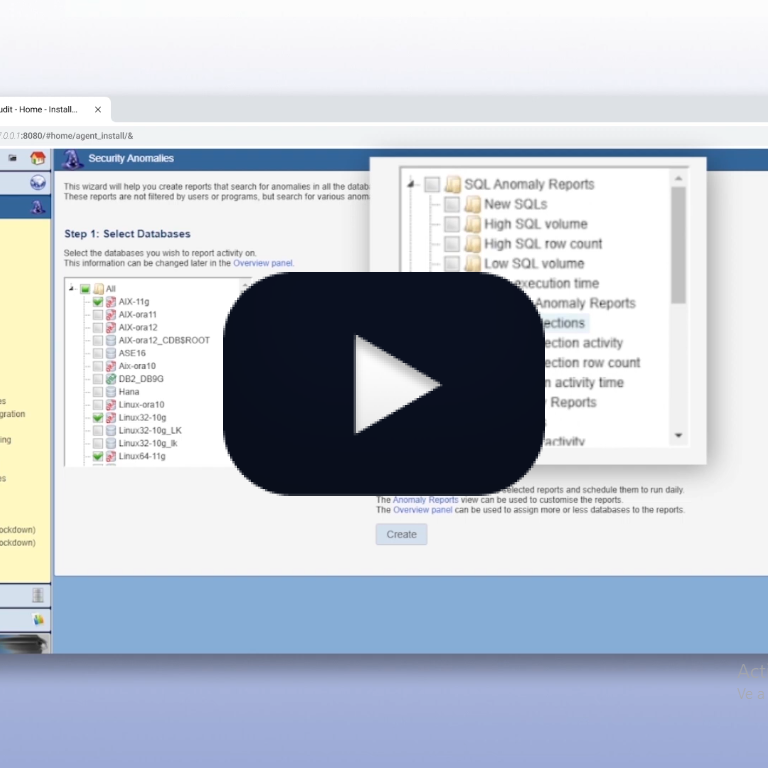Many organizations design their cybersecurity strategy and decide what solutions to purchase based on industry trends and best practices. The outcome is often imbalanced and inappropriate to the organization’s risk profile and security needs.
Best-practice implementations are usually one-size-fits-all and not tailored to the specific environment. Being predictable, there are usually tools and guides on the internet that can defeat them. A generic approach of this nature also fails to leverage advantages readily available when examining the specifics of the environment.
Many solutions come with out-of-the-box security. They contain built-in policies and signatures designed for a low false-positive rate in any environment. These have difficulty identifying attack variations and can never identify other vectors, resulting in a weaker defense.
This paper is about how to do security differently.
Perimeter Vs. Data Centric
Most security solutions fall into one of two categories: Perimeter security or Data-centric security.
Perimeter security aims to prevent attackers from getting into the network and accessing internal systems. A compromised desktop is not a data breach, but once attackers have this access, they can take the next step and try to gain access to the application or the database. A data breach would only occur if the attackers can navigate from that compromised desktop to the data.
Perimeter security has two strategic limitations:
- Internal threats – when a threat is already inside the network and behind the perimeter, it cannot be secured by these types of defenses. The same applies to threats outside the network with VPN access (.e.g. partners, consultants, and more).
- Statistical defense – perimeter protections almost always aim to reduce the number of penetrations but not to prevent them altogether. Regardless of how good our spam filters are, we continue to get spam emails. No matter how good our personnel training is, people still click on those phishing emails.
Data-centric is a methodology that revolves around the data. It starts with where the data is stored – the database and expands outwards to the applications that process that data.
Data-centric security includes database security, application security, IAM, and more. A strong data-centric posture can prevent a data breach regardless of how many attackers penetrated the perimeter. For example, cloud-based applications rely mainly on data-centric measures.
Perimeter security is a parallel defense where attackers only need to breach one of the measures to get in. Attackers that fail to penetrate the firewall can try the mail system, social engineering, etc. Perimeter security is as strong as its weakest link.
Data-centric security is a layered security resulting in a serial defense where attackers must penetrate all the layers. A successful application breach that fails to execute an attack against the database is a failed attack. Data-centric security is the last line of defense and aims to be as air-tight as possible.
Perimeter and Data-centric defenses are not mutually exclusive, and well-balanced strategies will include both.
Landscape Considerations
When building a security strategy, we must consider the threats we perceive as relevant. For example, are we worried about external threats, internal threats, or both? If internal threats are a significant concern, perimeter security will not be effective against those, and we should beef up the data-centric components.
We must also consider the effectiveness of different measures in the current landscape. For example, as more and more people work remotely, network security and endpoint security are less effective. Once people work from home, they are outside the corporate firewall and use their home computers. With minimal control over all these remote mini-offices with VPN connections, our perimeter defense becomes weaker than expected.
BYOD (Bring-Your-Own-Device) poses a similar challenge where many uncontrolled and insecure phones and tablets roam the corporate network inside our perimeter.
As the modern landscape changes and the effectiveness of perimeter controls diminishes, there’s a growing shift to internal defenses. Part of this shift includes a redefinition of the perimeter line – protecting the data center network is more important than the corporate network.
Asset Considerations
There are several considerations when choosing which systems to focus our defenses and how to allocate resources:
- Risk – some systems pose a higher risk than others. For example, a firewall is necessary because, without it, we will have countless attackers inside our network. We need to defend the application because all the people using it or with network access to it form a large surface area. We must also protect our database because it stores all the data, and a breach would be catastrophic.
- Effectiveness – some systems are easier to secure with better results, while others can be expensive to protect or have limited security benefits. For example, firewalls are an effective measure and are cheap and easy to deploy – that’s an easy choice. Application or database security (depending on the solution used) could be difficult or expensive to deploy but with good results. IAM can be costly to deploy but with limited value.
- Attack paths – some systems are on a critical path between the attackers and the data. Others are on paths that attackers could bypass. For example, an attacker must communicate with the database to extract the data. An attack is unlikely to succeed without it. However, whether an application is on such a path depends on the environment. Sometimes, the main path to the data is through a single application. In other cases, multiple applications or direct database connections offer alternative paths.
Balancing the risk, effectiveness, and attack paths is a central consideration in cybersecurity strategy, and there are multiple balancing methods. However, it’s important to remember there are many variables. For example, the effectiveness of the security depends on the solution and technology you’re evaluating since different solutions will differ in cost and effectiveness.
IDS and IPS
Intrusion Detection Systems (IDS) and Intrusion Prevention Systems (IPS) are fundamentally different methodologies in security.
IPS aims to prevent attacks and breaches. These are classic security systems like firewalls, users & passwords, etc. IPS are critical components in any security strategy.
In contrast, IDS aims to detect attacks and alert or report on them. These include measures like auditing, SIEM, etc. IDS are also a critical component in any security strategy as they inform security personnel, allow them to initiate a response, and provide forensic information.
It’s important to understand the core differences between IPS and IDS:
- Tolerance for false positives.
False positives in IPS mean the system prevents users from performing legitimate activities. Therefore, IPS cannot tolerate false positives.
False positives in IDS mean that reports or alerts require investigation by security personnel while users continue doing their jobs. While we don’t want too many false positives, most IDS are designed and calibrated to have a certain level of false positives. - Response time.
IPS must determine whether activities are valid before letting them through. A slow IPS means IT systems have longer response times, and users complain. An IPS is, therefore, always designed to use real-time algorithms capable of making split-second judgment calls.
IDS, on the other hand, can take their time to report or alert. IDS usually use more complex algorithms and can analyze large volumes of data to identify intrusions. They can refer to historical information or wait for future events to occur. - Circumvention.
When an IPS system prevents an attack, the attacker is inevitably aware of the failed attempt and can try again. Therefore, attackers constantly challenge IPS systems until they find a way to penetrate them.
IDS inform security personnel of the attack allowing them to respond in various ways. Responses can include taking systems offline, diverting attacks to honeypots, tracing the attack back to its source, and more. In all cases, attackers don’t get a second chance to try again against an identical defense. IDS systems are, therefore, much more difficult to circumvent.
Consequently, while IPS could prevent an intrusion, IDS is more likely to detect it and less likely to be circumvented. It’s always recommended, when possible, to deploy both types of systems. Deploy an IPS to block most attacks and deploy an IDS to detect the ones that got through.
Tailored Security
Every environment is different. Differences include the application architecture, technology stack, the number of users, administrator access, and more. Other parameters include the user roles, the programs in use, the network segments, the types of data, the activity profiles, etc.
Leveraging such parameters while implementing preventive and detective measures yields more effective results. Such tailored security cannot be out of the box as it requires evaluation, consideration, and planning. However, it’s vital for achieving high effectiveness in attack detection and a low false positive rate.
Customizing security this way takes time and effort, and there’s no magic bullet. But the results are far more likely to withstand an attack and prevent a data breach.
DCSA
Data-Centric Security Assessment is a service offered by Blue Core Research to help security departments quantify the risk to each of their systems and evaluate the effectiveness of different controls and strategies.
DCSA is an interview-based evaluation that uses your opinion about your systems. It will combine multiple parameters about each system in your environment and yield your risk level.
DCSA aims to help you choose the solutions and strategies with the most impact on your security to minimize the risk.
Final thoughts
The quality and strength of your security strategy depend on the time and effort that went into it. You will have a good security posture if you have a good balance between your perimeter and your data-centric, you created layered security, you combined both IPS and IDS on every system with a proper response strategy, you tailored your solutions to each environment, and you spread your resources according to the risk, effectiveness, and attack paths attackers are likely to follow.
That sounds like a lot, but it’s not that difficult. However, it means not following trends and buying solutions just because they are in fashion. It means putting efforts into implementations and not just looking to follow best practices. That requires effort and careful thought, but it’s the best way to lower the risk of a data breach.









